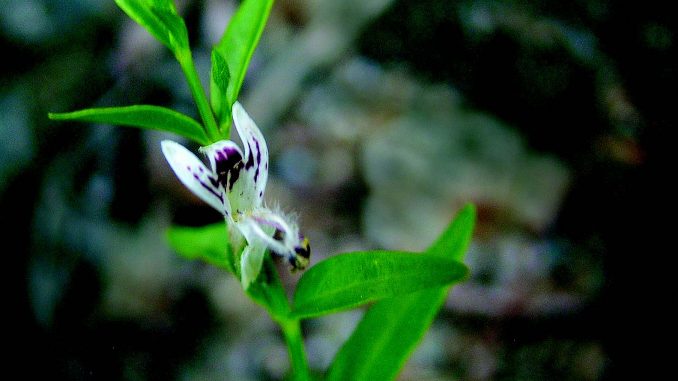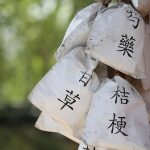
Andrographis paniculata (Burm. f.) Nees (Family: Acanthaceae) or ‘King of Bitters’ produces an extract which has immunostimulant activity and is widely found in Indian (Ayurvedic) and Chinese traditional medicine. It is famous for being used in the relief of symptoms associated with mild upper respiratory tract infections such as colds. Many countries know it as kariyat, kalmegh, hempedu bumi and polok cerita.
The plant is an upright annual growing to at least 70cm height with a number of branches.
Treatments
The leaves and aerial parts been used for many years to treat liver problems, bowel complaints, sore throats (Melchior et al., 1996), laryngitis (Poolsup et al., 2004), colds, rheumatoid arthritis, colic and fevers within the Chinese and Indian herbal systems.
It is currently being examined for reducing clotting times as part of a treatment for cardiovascular disease (Zhang and Tan, 1997; Guo et al., 1995;1996).
A recent clinical trial showed that an A. paniculata-based treatment relieved the symptoms of rheumatoid arthritis (Burgos et al., 2009)
Dichloromethane extracts of Andrographis paniculata inhibit the proliferation of colon cancer cells (HT-29 cell lines) and promote growth of human peripheral blood lymphocytes (Kumar et al., 2004). Whilst it does not cause actual cancer cell death it would seem to slow down the growth of these cell lines.
Componentry
The main actives include the labdane diterpenes, andrographolide and neoandrographolide although another 18 are known along with a number of other agents with potent immunostimulant activity (Puri et al., 1993). Kumar et al., (2004) found as well as andrographolide, two others called, 14-deoxyandrographolide and 14-deoxy-11,12-didehydroandrographolide. A more complete survey was conducted by Chao and Lin (2010).
There is renewed interest in the inhibition of glucosidase enzymes by some of the Andrographis extracts which are implicated in diabetes (Benalla et al., 2010).
Andrographolide (ANDRO) is also a cytotoxic agent and has significant activity against various cancer cell lines. It appears to help other drugs in their anti-tumour/cancer activity such as gemcitabine in the inhibition and apoptosis (cell death) of pancreatic cancer cells. There is some promising clinical data to support ANDRO’s use with this particular cancer (Bao et al., 2013). It also appears to upset liver cell cancer growth (Ji et al., 2015).
The pharmacological properties of extracts from this plant are reviewed extensively (Jarukamjorn and Nemoto, 2008; Varma et al., 2009; Akbar, 2011).
Products
The Australian brand Blackmores offer their Cold Combat™ product which is a cough syrup for soothing and treating sore throats.
Products From Our Affiliate Marketing Partners
This article contains links to products from affiliate marketing partners.
References
Guo, Z.L., Zhao, H., Fu, L. (1996) Protective effects of API0134 on myocardial ischemia and reperfusion injury. J. Tongji Med. Univ. 16 pp.193-7
______________ Xh., Z. (1995) An experimental study of the mechanism of Andrographis paniculata nees (APN) in alleviating the Ca2+ -overloading in the process of myocardial ischemic reperfusion. J. Tongji Med. Univ. 15 pp.205-8
Jarukamjorn, K., Nemoto, N. (2008) Pharmacological aspects of Andrographis paniculata on health and its major diterpenoid constituent andrographolide. J. Health Sci., 54(4) pp. 370-381
Kumar, R. A., Sridevi, K., Kumar, N. V., Nanduri, S., & Rajagopal, S. (2004). Anticancer and immunostimulatory compounds from Andrographis paniculata. J. Ethnopharmacology, 92(2), pp. 291-295 http://dx.doi.org/10.1016/j.jep.2004.03.004
Melchior, J., Palm, J., Wikman. G. (1996/1997) Controlled clinical study of standardized Andrographis paniculata extract in common cold – a pilot study. Phytomedicine 3 pp. 315-318
Poolsup, N., Suthisisang, C., Prathanturarug, S., Asawamekin, A. & Chanchareon, U. (2004) Andrographis paniculata in the symptomatic treatment of uncomplicated upper respiratory tract infection: systematic review of randomized controlled trials. J Clin Pharm Ther 29, 37–45 (2004).
Puri, A., Saxena, R., Saxena, R.P., Saxena, K.C. (1993) Immunostimulant agents from Andrographis paniculata. J. Nat Prod. 56: pp. 995-9.
Varma, A., Padh, H., Shrivastava, N. (2009) Andrographolide: A New Plant-Derived Antineoplastic Entity on Horizon. Evid. Based Complement Alternat Med. doi:10.1093/ecam/nep135
Zhang, C.Y., Tan, B.K. (1997) Mechanisms of cardiovascular activity of Andrographis paniculata in the anaesthetized rat. J. Ethnopharmacol. 56 pp. 97-101

Leave a Reply